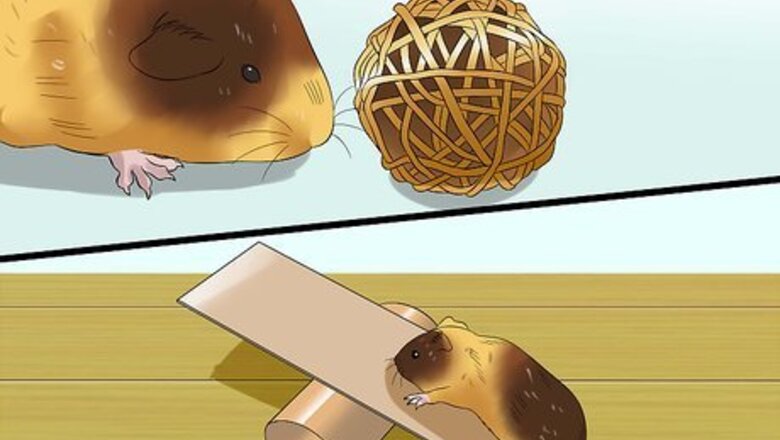
views
Choosing Toys for Your Guinea Pig
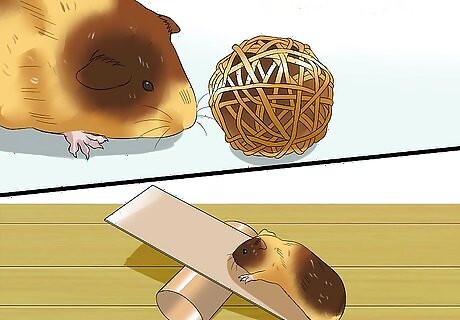
Provide your guinea pig with a variety of toys. Toys are an important part of your guinea pig's enrichment and mental stimulation. There are many types of toys that you can give to your guinea pig, including nibblers, chew toys, and toy balls. In addition, you can make homemade toys out of toilet paper rolls, empty shoeboxes, and empty milk cartons. Although you may not interact directly with your guinea pig when they're playing with their toys, you can still spend time with them while they're playing with them.
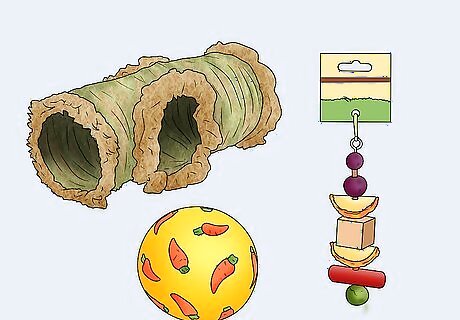
Look for toys that include food. Guinea pigs are very food-orientated, meaning they are more likely to interact and play with toys that reward them with treats, such as treat balls, hay stuffers, grass tunnels, or hanging vegetable toys.
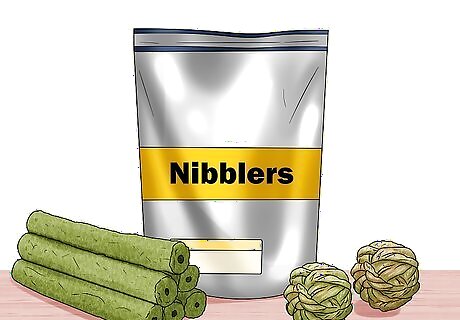
Consider buying nibblers and chew toys. These toys are usually made of a sturdy natural material, such as wood. Not only will they keep your guinea pig busy, they will also help your guinea pig keep their teeth filed down. Your guinea pig’s teeth can become dangerously long, so providing them with toys that they can nibble on will help maintain good dental hygiene.
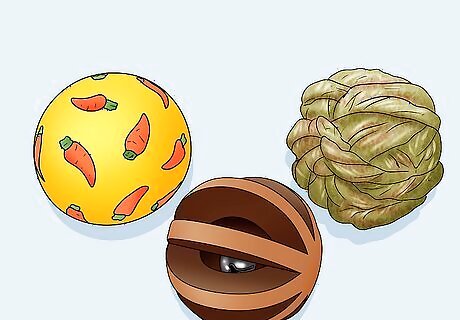
Consider buying a toy ball. Toy balls are also typically made of natural material and can easily be pushed around by your guinea pig. You can also make one at home by simply scrunching up a piece of paper.
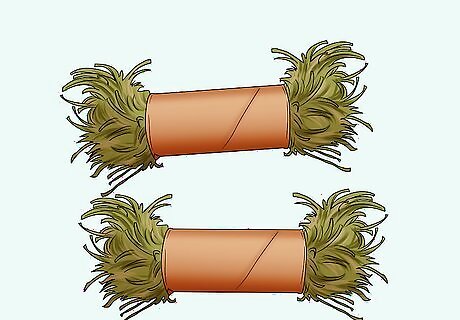
Consider buying hay stuffers. You can buy a hay stuffer from a pet store or make your own by stuffing hay and treats inside of a toilet paper tube.
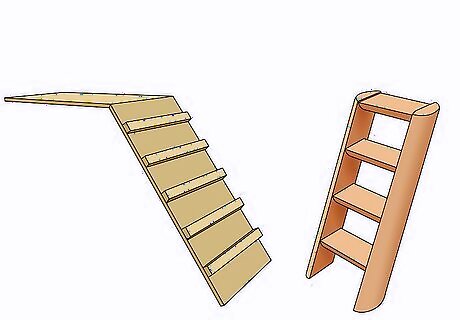
Implement ramps and stairs. Guinea pigs are active animals that love to explore. Obstacles such as ramps and stairs offer fun play, especially for multi-level cages. Make sure that the ramps and stairs are solid. Your guinea pig’s legs are short and could get stuck in the wires of wire ramps or stairs, causing injury. Guinea pigs are not good climbers, so ensure the ramps are not too steep.
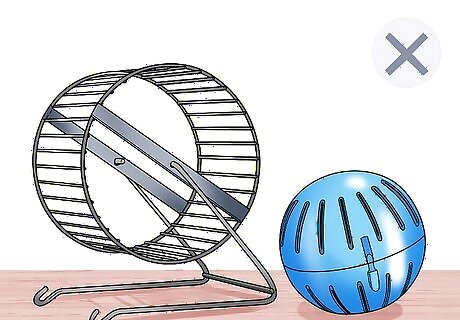
Never use exercise balls and wheels. Guinea pigs backs do not bend like the backs of other pocket pets (mice, hamsters), so exercise balls and wheels can very easily lead to back injuries in guinea pigs.
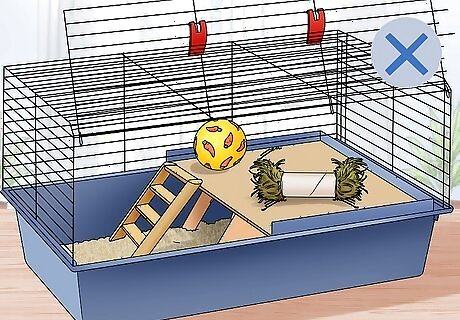
Do not overcrowd your guinea pig's cage. Put only a few toys in your guinea pig's cage at a time so that they still have room to run around. Switch out old toys when you clean their cage so that they have a new set of toys to play with.
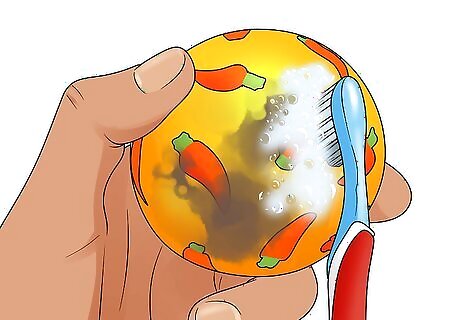
Clean your guinea pig's toys on a regular basis. Plastic toys can go in the dishwasher. Wooden toys should be washed by hand with a towel and allowed to dry completely before being placed back inside their cage.
Playing With Your Guinea Pig Inside
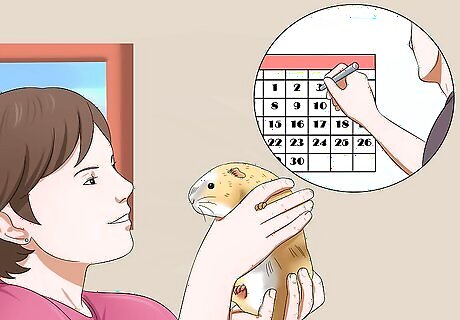
Schedule regular inside playtime with your guinea pig. Consistent daily interaction with your guinea pig is very important for their overall wellbeing. If you forget to play with your guinea pig or are not able to play with them until much later in the day, they may become depressed or withdrawn because of the change in routine.
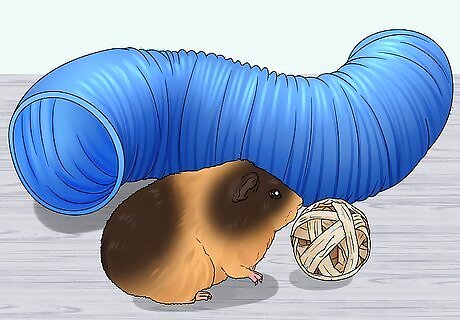
Let your guinea pig play outside of their cage. Because guinea pigs are so active, keeping them in cages all the time can leave them feeling frustrated with lots of pent up energy. Letting your guinea pig roam outside of their cage will give them an opportunity to burn off excess energy and implement a routine of stimulation and enrichment.
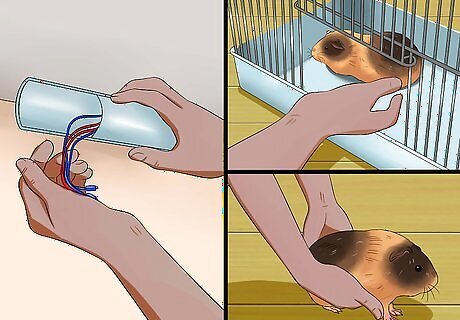
Guinea-pig proof your room. Before you let your guinea pig out of their cage, you will need to ensure the room is safe for them to access. Guinea pigs like to chew on things, so make sure to put away or hide anything that they could chew on – electrical cords, mats, rugs, trinkets, etc. It would also be helpful to cover any accessible areas of furniture that your guinea pig can chew on, such as the corners of couches, tables, or chairs. Block any places your guinea pig can escape to or hide under, such as underneath the sofa, closet, bed, etc. If you have any other pets, put them in another room until after you place your guinea pig back in their cage.
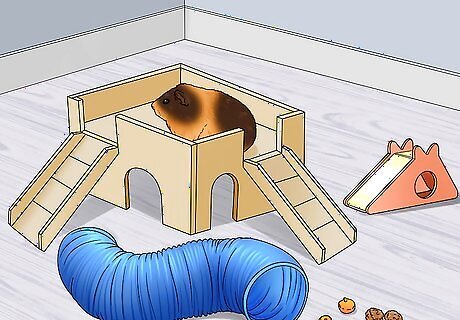
Place different toys and obstacles around the room. Remember, guinea pigs are curious animals that love to explore. Placing things around the room will allow them to interact with their new surroundings. You can even put some treats on the floor for your guinea pig to munch on while they're playing.
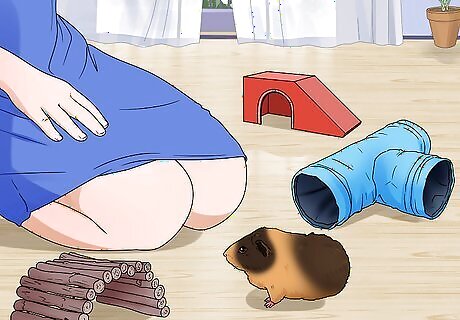
Supervise your guinea pig outside of their cage. Because guinea pigs like to explore their surroundings, it's important to monitor them while they are in a new environment to ensure they do not get lost or start chewing on something dangerous. You should never leave your guinea pig unattended while they are outside of their cage.
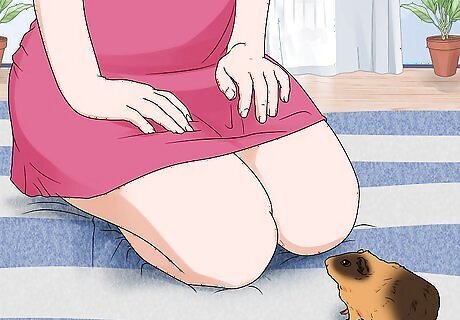
Interact with your guinea pig at their level. Being prey animals, guinea pigs are easily scared by things that are taller than them. If you interact with them above their eye-level, they could see you as a threat, rather than as a friend. It's important to sit down and play with them at an appropriate level to ensure that they feel safe and comfortable. You can sit, crouch, or lie down on the floor while playing with your guinea pig. Get a cushion if you want to feel comfortable.
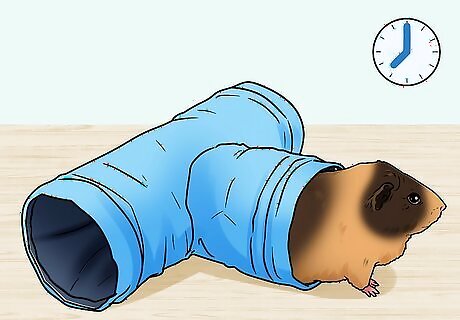
Be patient. It's not abnormal for your guinea pig to show signs of disinterest towards their toys, especially when they are first introduced to play-time. Guinea pigs can become timid when placed in a new environment. Don't push your guinea pig to play or interact with toys if they don't want to. Instead, encourage them to explore their surroundings by scattering treats around the room.
Playing With Your Guinea Pig Outside
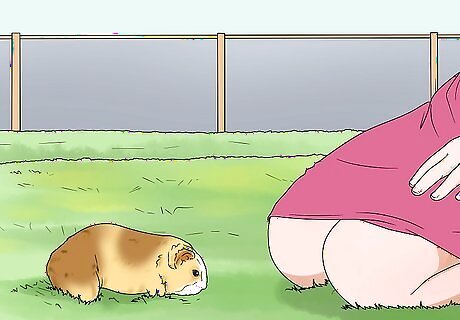
Create a routine with your guinea pig. You should aim to allow your guinea pig to play outdoors at least once a week for an hour during good weather. Doing so will benefit their health and mental stimulation.
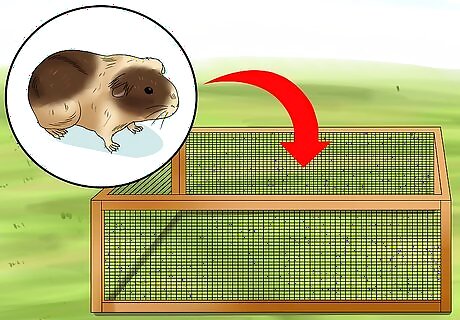
Prepare an outdoor enclosure. Allowing your guinea pig outside is beneficial for their health and wellbeing. Guinea pig runs are popular enclosures that allow for your guinea pig to play safely outdoors. However, it's important to keep in mind that they also offer minimal protection from predator and weather elements. Therefore, it's important to ensure your guinea pigs are given shelter that they can retreat to when scared. A few examples of items you can add to the cage for your guinea pig to hide inside are igloos, paper bags, plastic tunnels, or cardboard tubes. Make sure that you place plenty of water and good-quality hay in the run as well. If the grass outside is damp, place a large folded towel on the ground to offer your guinea pig a dry place to rest when they are outside. Alternatively, you can wait until the grass is completely dry before taking your guinea pig outside. Remove any weeds and debris from inside the enclosure area. Do not place your guinea pig on treated, mowed, or fertilised grass.
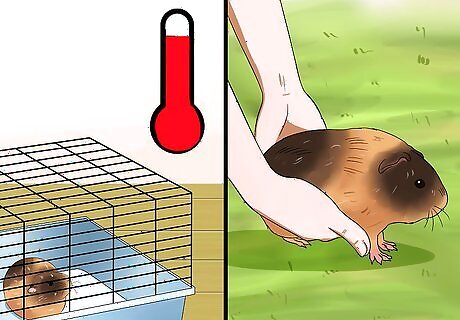
Take your guinea pig outside when it's warm. Guinea pigs are very sensitive to hot weather (80 degrees Fahrenheit or more), so it's important to take them outside only when the temperature is not too hot. The ideal temperature range for guinea pigs is approximately 65-75 degrees Fahrenheit. The temperature should not be too high in the springtime, so this would be the perfect time to take your guinea pig outside.
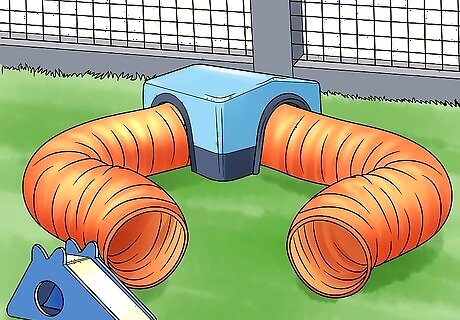
Place different toys and obstacles around the enclosure. Remember, guinea pigs are curious animals that love to explore. Placing things around the enclosure will allow them to interact with their new surroundings. You can even put some treats on the floor for your guinea pig to munch on while they're playing.
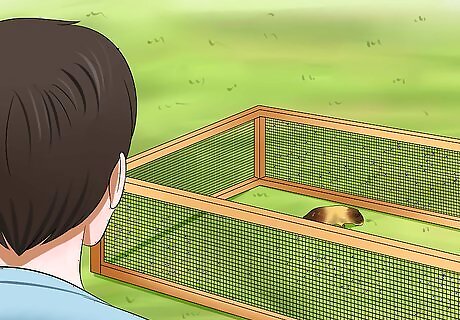
Supervise your guinea pig while they are outdoors. Due to the vulnerability of being outside, guinea pigs are susceptible to temperature fluctuations and wild predators. While taking your guinea pig outdoors to play can be enjoyable for the both of you, it's important to never leave your guinea pig unattended. Doing so will put them at risk of being spooked or, even worse, attacked by wildlife. Because guinea pigs are sensitive to extremes in temperature, monitor your guinea pig for signs of distress or discomfort. If your guinea pig is starting to suffer from heatstroke, they may exhibit signs such as reluctance to move, weakness, and panting. If you notice any of these signs, bring your guinea pig inside immediately and contact your veterinarian.
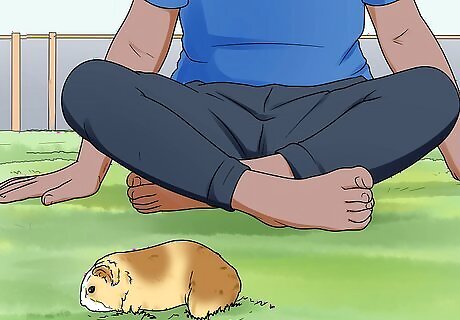
Interact with your guinea pig at their level. Guinea pigs are easily scared by things that are taller than them because they are prey animals. It's important to sit down and play with your guinea pig at their eye-level to ensure they don't see you as a threat. You can sit, crouch, or lie down on the floor while playing with your guinea pig. Get a cushion if you want to feel comfortable.
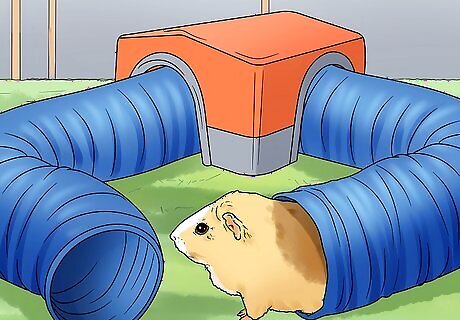
Be patient. Being prey animals, guinea pigs can become quite timid, especially in an outdoor enclosure where your guinea pig may feel vulnerable. It's not abnormal for your guinea pig to show signs of disinterest towards their surroundings at first. You can encourage your guinea pig to explore by scattering treats around the enclosure. You can help lessen stress levels in the enclosure by providing your guinea pig with shelters to hide inside, such as an igloo or log bridge.




















Comments
0 comment